REFLECTIONS ON THE GUEST LECTURE/LINKS AND REFERENCES
In listening to Mazir Raein and Suzanna Edwards highlight some of their own experience of time shifts and influences there are a few key things that stand out that have all played their part to greatly influence the varying artists and designers and the work produced: The social, economic, and political landscape, the period you live in, your location, and the technology available at the time.
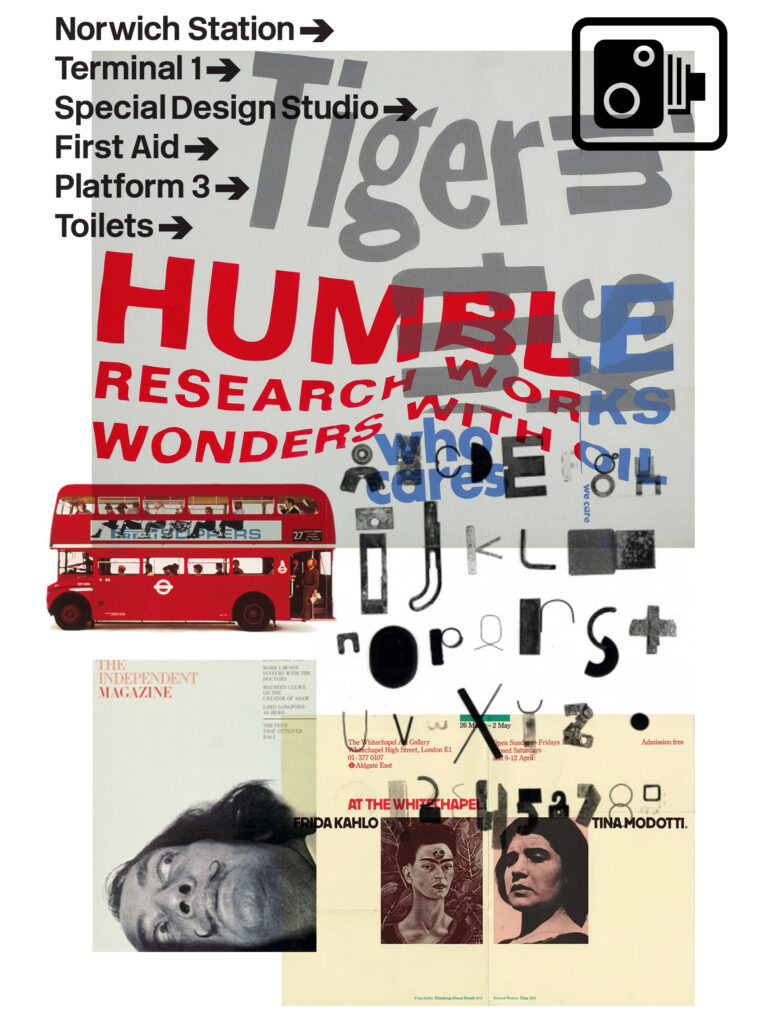
"(in the '60s) there was a distinct blurring of boundaries between traditional painting, sculpture, painting and film, film and typography, photography and printmaking, fine and commercial art".
Derek Birdsall
—
Corita Kent: Interesting tension between the work produced and the strict confines of the doctrine of the church. No real typographic training but message was obviously important and expressed typographically. I wouldn't think this work was groundbreaking even at the time – only from the perspective of her background. Almost an injustice that the church took offence to some of the pieces which is diametrically opposed to the supposed teachings of Christ. Can see some lineage between her work and that of Reid, Oliver and Carson (collage, cut ups, image and illegible type).
Derek Birdsall: Juxtapositions - clean type versus image. Interesting image crops. The element of surprise. Amazing to think all work created was more or less hand-made. John Morgan "older processes allow you to concentrate on craft". Blurring boundaries between art and commercial art. Experimental approaches definitely bring about new ideas. Computer has its own set of limitations. Freedom's gained in '60's and '70's closed down in successive years. Doesn't (Birdsall) look to the past. Smaller industry, less competition in the '60's. Knew when to walk away from an ill fated project.
Richard Hollis: Sought out Swiss design when hardly known in UK. It's this 'zeitgeist' approach that is a theme that runs through all the successful designers work. Ahead of the curve. 'narrative stream' - the combination and flow of text and image. This is interesting not necessarily in the work he produced, but just as a way of conceptually thinking about your work and its layout. Owned the process. Autonomous approach... don't think design today works on this premise as much... since Thatcher the individual is king. Design diametrically opposed to that of an artist - not always. I think self published works can sit in an art space. Agree that working with a client is a "mutual engagement". "Design today is self regarding - not historical"... powerful and true. Point about disconnection from materials also true – "what's on the screen isn't what's on the paper".
Fletcher, Forbes, Gill: Self published works spread influence. Still practice of Pentagram today. Inherent belief in the work.
Pentagram: Interesting that salaries, shares and buy in all split evenly regardless of whether your a Scher or an Obermann. Bit of a hippie/U2 lightbulb moment that keeps harmony within the organisation. Do pro-bono work - self promotion through work for the greater good. Collaborative problem solving between partners. Note to self: I need to get out of the kitchen and into a creative space for collaboration to take place. Beatles/Stones scenario where you are challenged to do better work. Scher - not enough 'real' making and doing.
Margaret Calvert/Jock Kinnear: Type and pictographic systems. '57. Possibly the first brand architecture. I love the road sign system but some of the symbols drawn back in the 50's, 60's need updating. 'Level Crossing' is a steam train and the traffic camera sign has a hassleblad on it... Interesting that all Kinnear's business came from connections and people moving from job to job bringing him with them. Pictogram - reduced down to its essence.
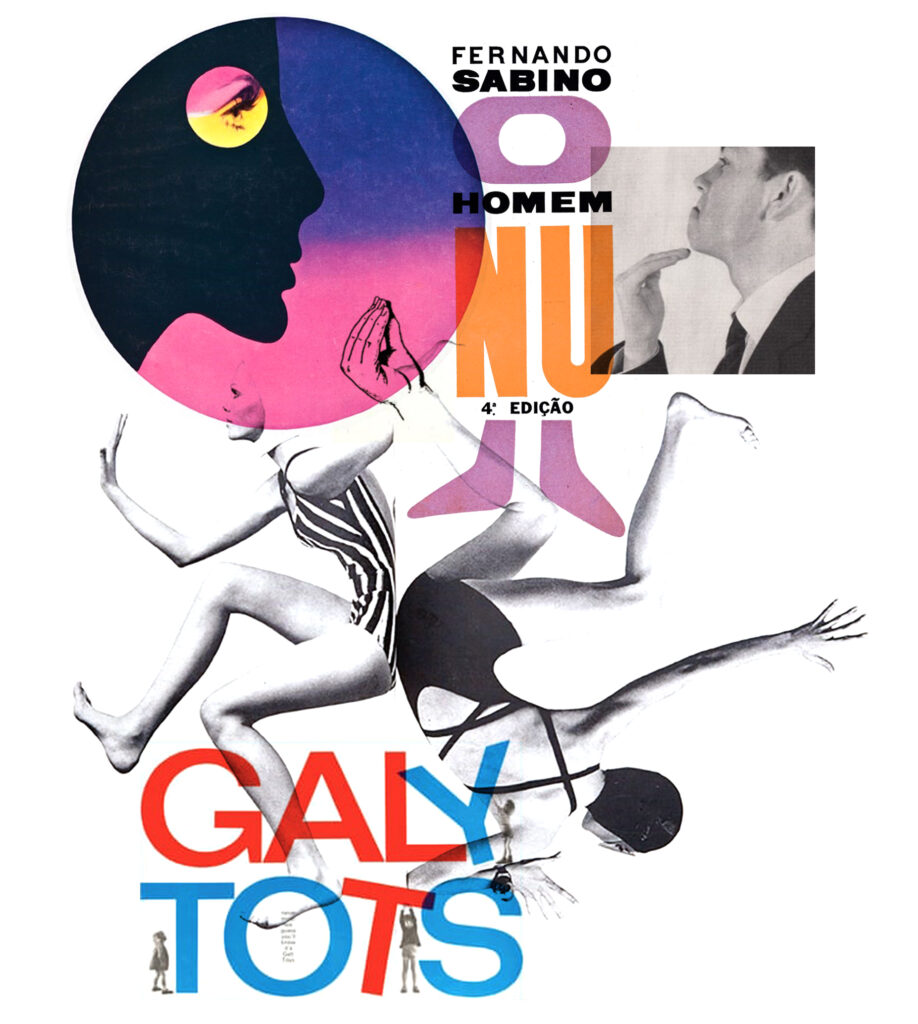
Bea Feitler: Amazing. Interesting use of white space and image rotations, crops. Lot's of play and experimentation. Day Glo inks. Self published magazines. Prescient "there's so much visual imagery in today's world that people can't judge what's good or bad". Sounds very much like instagram culture.
Bruno Munari: Kinesthesic learning: Teaching through touch and colour. Tactile. Almost like braille - opening up sensory world's. Material learning. Non verbal vernacular. "...clear the mind of all pre-concieved notions". Gropius (Bauhaus Manifesto) "...independent of formulas in (his) own work". This is interesting - disconnect from the output and what is created on the computer (today). Tactile nature overlooked - and formulaic responses kill the work.
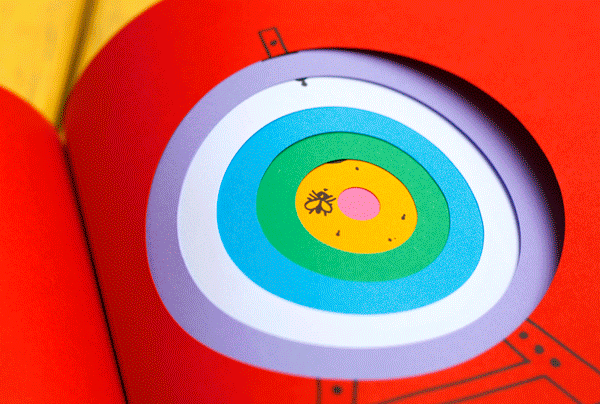
"The artist must... become active...in present day techniques, materials and working methods... to clear his mind of all preconceived notions... life changes – and today more rapidly than ever".
Bruno Munari
—
Barney Bubbles: Freelance commissions. Counter-culture. Autonomous approach (see notes on Hollis). Had a client in Jake Riveria that created his own disruptive 'happenings' which allowed the work to live in an experimental space. Would have hated CD's and MP3's. Developed unconventional formats - die cuts, folds... paper sculpture. Funny and irreverent. BTW: My all time favourite designer. Hollis' quote "designers tend to manipulate imagery not create it"... Need to bring in more self expression into my work.
Jamie Reid: See Heartfield, Blake and Hamilton in his work - Juxtapositions. Controversy = iconic, shocking, new. Cultural appropriation/reflection of society and political landscape. Punk ethic - DIY. Not waiting for someone else to say whether it's right or wrong... getting it out there. Interesting re: Skinhead book that he was conscious of "not borrowing" when that is kind of what he is known for.
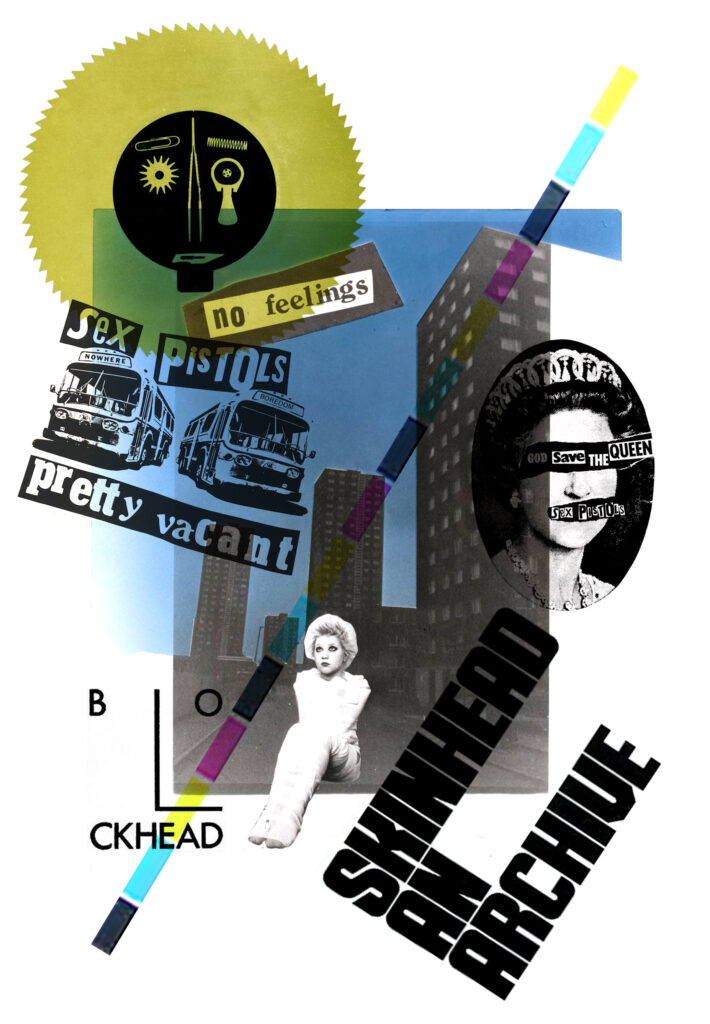
David Carson: Brody "The end of print". Personally found this deconstructed approach to type in the nineties annoying. It was like I have a new toy in the computer and how can I be different for the sake of being different. It blurred the lines between art collage and design so much that you couldn't read the articles and while visually stimulating I found it and still find it all a bit self indulgent. It's my Marmite and I don't love it. Vaughan Oliver's work for 4AD is as complex and layered but somehow it works in a commercial space as did Why Not's work for Smirnoff and Next. Enough already...
FUSE: Like the liberation of font creation and coded typographic approaches - 'Emotional communications'. I sense that this work holds a lot of parallels with the work of David Carson, but in it's own way it was exploring deconstructing of type in a way that wasn't meant to be read in the first place. The coded type idea makes me think of Peter Saville's sleeve for New Order "Power, Corruption and Lies".
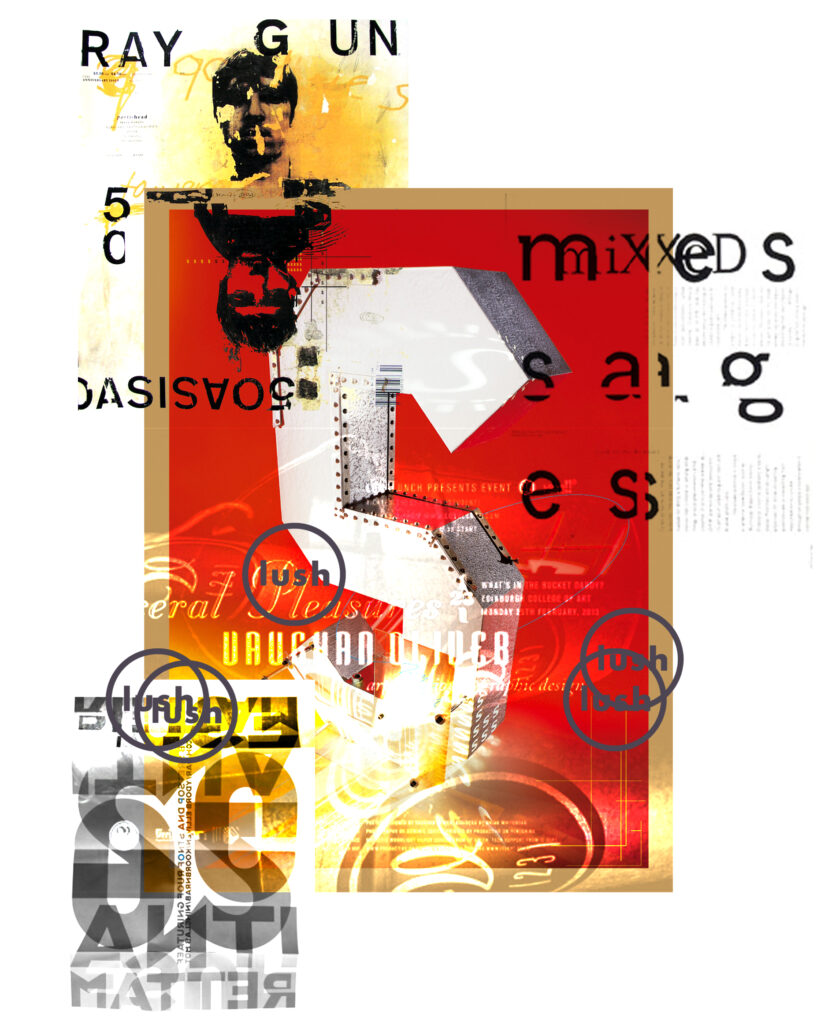
TAKE OUTS
Be fearless and sometimes shocking - believe in the work and the process
Look for interesting formats, juxtapositions, crops, techniques, inks, materials and textures
Look for the element of surprise, humour and play
Make more, self promote/publish, take ownership of the process - DIY and get it out there...
Use self-created or unknown visual reference to push the creative, Try to avoid formulaic responses
Be honest about your reference points
Reduce ideas down to the bare essence
Collaborate with interesting 'people' and be challenged to do better work
Find a client open to your ideas
Think about doing pro-bono projects 'for the greater good'... HOT FUZZ
Know when it's time to walk away from a project
—
WRITTEN TASK
List 4 key evolutionary design steps that contributed to the identity of your design culture today in your country in your opinion.
1: The Dutch connection: In 1951 Tim O'Neill of Sun Advertising realised that Aer Lingus, Ireland's premier airline, was to be the key part of Ireland's identity abroad but he couldn't source designers locally with the skillset required for such an undertaking. Aware of the design work carried out for KLM in the Netherlands he paid the Dutch designers a visit. This started a long lasting relationship with Dutch Designers and Holland which exists to this day. (source: Oranje and Green/Holland-Ireland Design Connections 1951-2002. Conor Clarke 2002).
2: Kilkenny Design Workshops: The Kilkenny Design Workshops (KDW) were a government-funded research and development centre of excellence for design (and design advocacy, research and promotion) which was established in Ireland in 1963. It was created to inspire, support and demonstrate to industry how design could be the key factor in change and lead to economic success. This was a new departure, up to this point no model had existed anywhere in the world for this type of practice. Teamwork is common today in design practices but this method was new for its time. KDW operated from the converted Ormonde Stables in Kilkenny City from its official opening in 1965 until its closure in 1988. (source: https://en.wikipedia.org/wiki/Kilkenny_Design_Workshops).
3: The shift from Advertising to Design: Most design in Ireland is centralised to the cities of Ireland with both design colleges and communities based in Dublin, Cork and Galway. In the 50's, 60's and 70's most design work was carried out within Advertising agencies. The cultural shift in Ireland evolved from students not wishing to pursue a career in advertising, looking to other countries for inspiration and in turn driving them towards setting up their own practices. This self startup culture continues with some of the agencies now diversifying into new media become full service operations.
4: Technology: New technology along with a new wave of students fully versed in the digital landscape is changing the way agencies are formed in Ireland with leanings toward social media, experiential and spatial design becoming part of the norm for any start up.
—
WORKSHOP CHALLENGE: GEOTAGGING
DESIGN PRACTICES
DAVID SMITH ATELIER
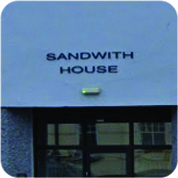
Atelier is a workshop. A place to think, and make…
Atelier is the studio practice of designers David Smith, Oran Day and their associates. An independent design practice that distinguishes itself from many commercial practices by working almost exclusively — as designers and consultants — with public and cultural sector organisations, and within design education, on a project by project basis. Since its inception the practice has established an enviable reputation for the quality of its design work. The success of the studio’s work is the result of collaboration with diverse and ambitious clients and the valued input of national and international associates. Despite a diverse creative output the studio advocates a clear and simple approach for all projects; one which is grounded in analysis and objectivity. From such pragmatism emerges original and distinctive solutions. Intelligent, ambitious, restrained, meticulous, well crafted and memorable have all been used to describe our award winning designs.
www.atelier.ie
www.100archive.com/workplaces/atelier-david-smith
Sandwith House, 52-54 Sandwith Street Lower, Dublin, D02 WR26.
Summary/Reflections: Two key partners in David Smith and Oran Day. They are a small studio practice based in Dublin City that produces varied client work to a very high standard for public and cultural and arts sectors. The majority of the work is print based. They are known and recognised in both Dublin and Internationally for their award winning work and though seemingly small are quite well established. David and Oran would be the key designers controlling every detail of each project from start to finish with an almost Swiss approach to typography. The name 'Atelier' is simply French for studio and evokes a small studio with an International outlook. They are well located: A five minute walk to the City Centre and 2 mins from the Dart which is our overground train service. Dublin also has a Tram (the Luas) which makes it easy to get around. I think the small team allows them to focus in on the detail of the work and content and creates ownership for the owners.
...
BOYS AND GIRLS
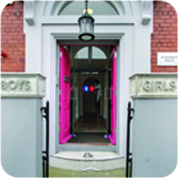
We work with ambitious brands who believe in the commercial value of entertainment. Smart businesses that recognise the power of creativity to have a measurable effect on their results. Who see that the more entertaining the work the more it is remembered, the less money you have to spend forcing it down people’s throats. They understand The Smuggle. My information in exchange for your attention. It sounds simple, but that doesn’t mean it’s easy. This is serious business. It’s not for the faint-hearted. Only the daring will survive. Only the entertaining will succeed.
www.boysandgirls.ie
Boys+Girls, Bloomfield House, Bloomfield Avenue, Dublin 8, D08 WT10.
Summary/Reflections: Mid-Large company 16+ Employees. Experiential design with a focus on digital and multimedia outputs for online, outdoor and televisual communication. The name actually comes from the building they are in which is an old primary school. The work is multilayered and as such the skillsets of the people required for setting budgets, strategic planning, design, film, digital and post production are all based under the one roof. I think this is the direction most larger agencies will find themselves in if they want to stay in the digital/experiential sphere. The language is all geared towards entertainment, brands, success, strategy, power, effectiveness and results. They are situated within 10 minutes of the city centre. Having more staff, and a larger building to house them in, obviously has cost implications but in Dublin it is all relative as nowhere is cheap to rent. There are pockets of regeneration and gentrification all over the city which continues to keep rentals high. However, television and digital does bring in more finance than traditional design.
...
UNTHINK
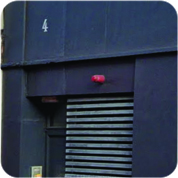
To unthink is to lose one’s preconceptions, in order to achieve a truly unique outcome. As an agency, we are inquisitive, open minded, and approach every new project with a sense of adventure.
www.unthink.ie
4 Mary's Abbey, North City, Dublin
Summary/Reflections: Founded by Noelle Cooper and Colin Farmer. Small design-led practice based in Dublin City. Produce varied client work for cultural and arts sectors. Known for their experimental creative solutions and idea based design. The name 'Unthink' is a re-evalution of a process to avoid formulaic outcomes, it's also clever in the way it makes you stop and think when you hear or read it. It is also evident in the work they produce - thoughtful, colourful, clever... I think it shows when a smaller company has more of a creative team versus a strategic one. I think the work can also tend to suffer the larger a company gets. I think the work Unthink do is varied in it's approaches but united in a good idea. They are very different to say Atelier and the work is more expressive. Having said that Atelier have a very specific typographic approach.
...
DESIGN PRODUCTION SERVICES
PLUS PRINT
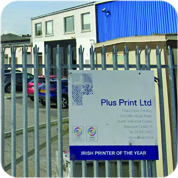
We are collaborators, working with a diverse, creative bunch of people
Working with a variety of clients from the arts to the private sector, we believe in innovation and adapting our methods to ever-changing industry demands. This means that we can offer you the best printing solutions currently available.
Services
Lithographic, Digital, Emboss, Foil, Packaging, Binding, Die-cut
www.plusprint.ie
Unit 44b, Moyle Road, Dublin Industrial Estate, Dublin, D11 V268.
Summary: Built a reputation as the go to print house in Dublin for graphic design work. Collaborative and inclusive process allows for great results.
...
SNOW
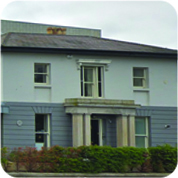
Founded in 2011, SNOW is a design and laser-cutting company run husband and wife team Fiona Snow and Michael Mohler.
All of our work strives to balance aesthetics, precision, and creative problem-solving. We blend a range of adaptive creative and technical skills to offer a unique and responsive service.
Our business was born from a love and deep respect for the tangible - for manual processes. We utilise digital fabrication in appropriate ways to enable the development of objects that are lovingly made and competitively priced.
We offer a retail range, laser-cutting services and design services. Please follow the links above for more information.
www.snowlaserstudio.com
SNOW, Studio 3, Moran House, Queens rd., Dun Laoghaire, Co. Dublin.
Summary: Lasercutting service.
...
POST
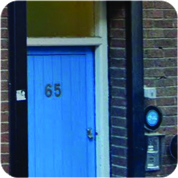
Post Studio partner with people to help identify and solve the right problems by providing pragmatic design services. We do this across physical and digital outputs for clients large and small.
www.poststudio.ie
65 Strand Street Great, North City, Dublin 1, D01 P446
Summary: Founded by Sean Mongey. Small practice based in Dublin City. Produce varied client work but mostly known for their coding abilities and site building. Many creative businesses in Dublin outsource web work to them.
...

